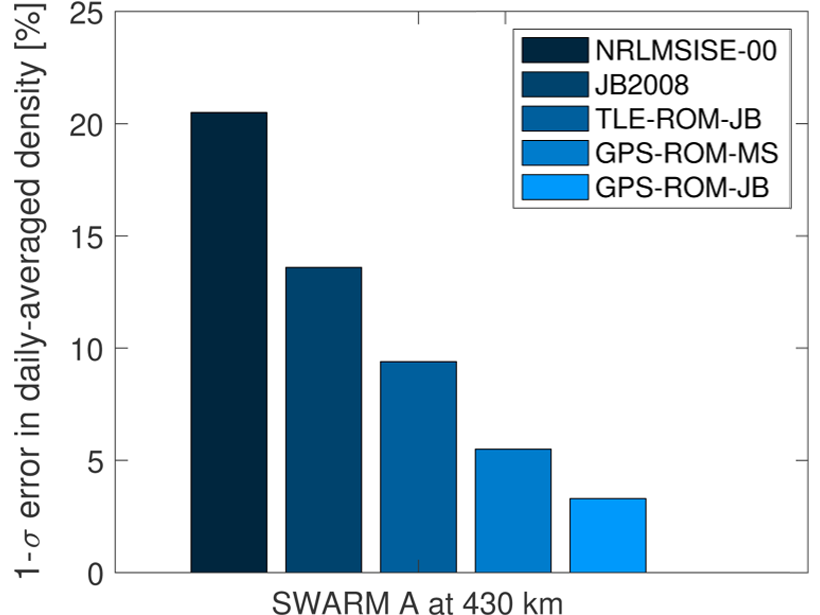Source: Space Weather
Modern societies are critically dependent on the safe operation of satellites, including reliable forecasts of satellite location and avoidance of collisions. Gondelach et al. [2021] is an excellent example of how better assessment of space weather conditions, in this case thermospheric density, can contribute to that safety. The authors present an improved scheme for estimating thermospheric density in real-time using satellite tracking data both from ground-based radars and on-board GNSS receivers. This is an important step towards better management of space traffic in the low orbits (under 800 kilometers) where space-weather-driven changes thermospheric drag are a significant source of uncertainty in forecasts of satellite location and collision risks. The paper highlights that space weather is a significant element in the emerging discipline of space traffic management.
Citation: Gondelach, D. J., & Linares, R. [2021]. Real‐time thermospheric density estimation via radar and GPS tracking data assimilation. Space Weather, 19, e2020SW002620. https://doi.org/10.1029/2020SW002620
—Michael A. Hapgood, Editor, Space Weather
Text © 2021. The authors. CC BY-NC-ND 3.0
Except where otherwise noted, images are subject to copyright. Any reuse without express permission from the copyright owner is prohibited.

